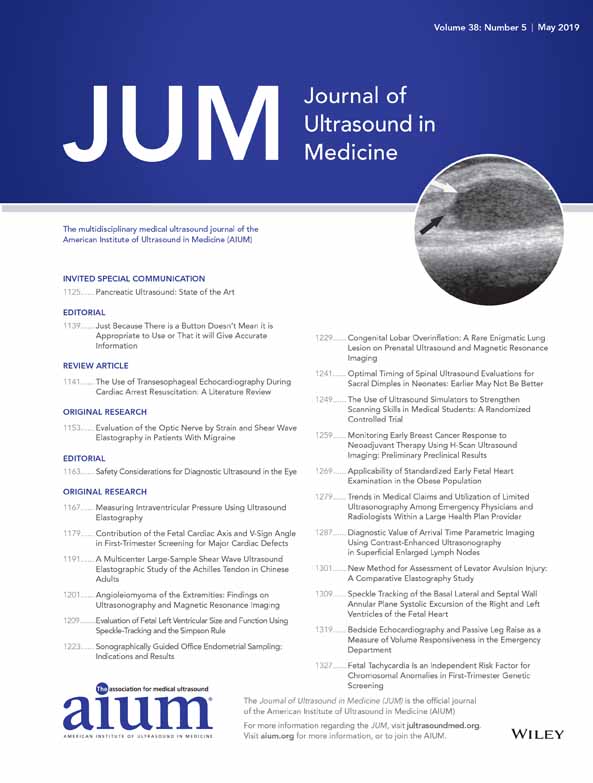New Method for Assessment of Levator Avulsion Injury: A Comparative Elastography Study
We thank everyone who voluntarily dedicated their time and effort.
Abstract
Objective
The aim of this study was to introduce elastography as a new method for sonographic assessment of postpartum pelvic floor trauma.
Methods
We examined 86 postpartum primiparous women, of whom 43 had undergone primary caesarean section (group_CS) and 43 vaginal delivery (group_VD). In a puborectal-symphysis plane, B-mode and elastographic ultrasonography were used to evaluate pelvic floor trauma. The strain value of left and right puborectal muscle was assessed close to the symphysis (Trauma_Elastography). The strain ratio maximum of this measurement was stored (Trauma_Index).
Results
The elastographic evaluation revealed more trauma-suspicious lesions than the B-mode investigation (60.5% versus 39.5%; P < .001). The median Trauma_Index was higher in group_VD compared to group_CS (1.63 versus 1.18; P < .001).
Conclusion
Sonographic elastography assessment in a new examination plane shows postpartum trauma of the pelvic floor in women after vaginal delivery. This new method may help to identify women with a higher risk of postpartum pelvic floor disorders.




